Blog
Types Of Dog Collars: Guide To Choosing The Right One
When choosing the right type of dog collar, you need to consider three things:
- The Type
- The Material
- The Style
This guide will help you choose a suitable collar for your dog. Different types of dog collars work better for dogs based on their age, breed, and needs. If you’re looking for a dog collar for training, or just for style, this guide is for you. Let’s take the confusion out of choosing a collar for your dog.
Flat Collar
The Comfortable Dog Collar Good For Most Dogs
Fat dog collars are the most common type of dog collar. They’re typically made of a flat strip of material, such as nylon, leather, or fabric. They’re designed to fit snugly around the dog’s neck. Flat collars usually have a buckle or a quick-release snap for easy fastening and removal, and they often include a ring for attaching a leash or identification tags.
Designer Dog Collars
Designer Dog Collars
Designer Dog Collars
Lightweight Biothane Waterproof Dog Collar with Optional Riveted Nameplate
Martingale Collar
Safely Train Dogs That Pull On The Leash
A martingale collar, also known as a no-slip collar, tightens when the dog pulls on it. This provides more control without harming the dog’s neck and throat. A martingale collar will help reduce pulling by placing a small amount of pressure on your dog’s neck. However, these collars are not intended for dogs who constantly pull during walks. This is because the collar will be perpetually tightened and uncomfortable for your dog, even though they do not choke.
A martingale is different from a choke collar in one key way. While both tighten on the throat to correct pulling, unlike the choke collar, the martingale never tightens enough to choke or harm your dog.
You should not leave a martingale collar on at all times – especially when your pup is left unattended. While these collars are safe, the tri-guide increases the risk that the collar will get caught on something. This can lead to choking, suffocation, or another type of injury.
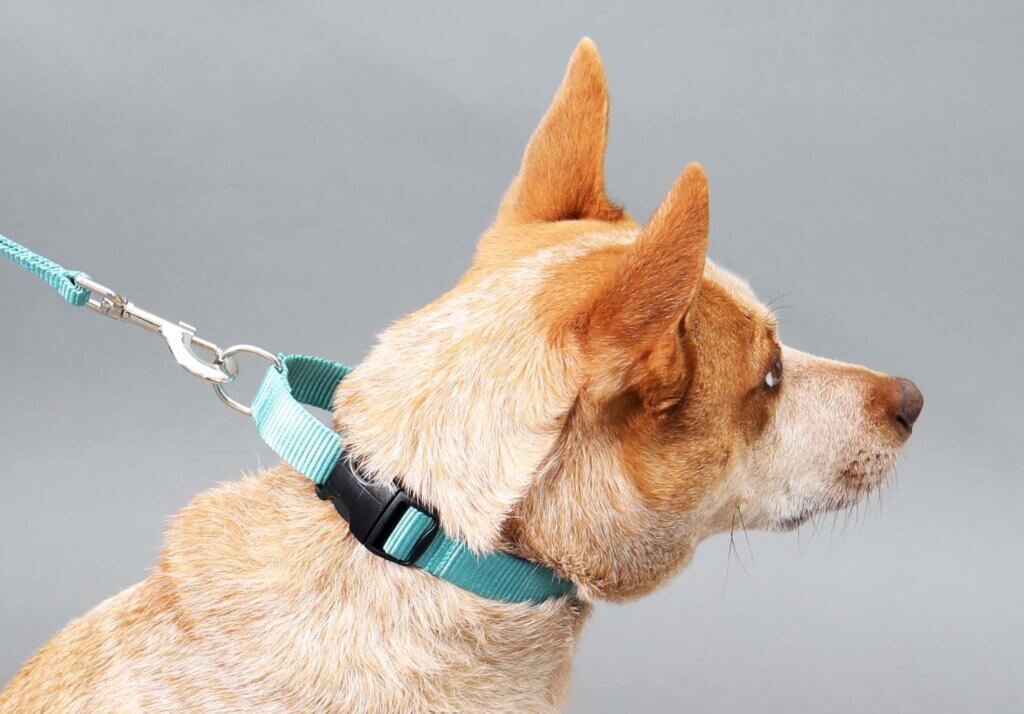
Harness
For Dogs That Back Out Of Collars, Have Breathing Trouble Or Sensitive Necks
While collars are best for everyday wear, a harness can be the safest option for dog walks and outdoor activities. Whenever a dog is more tempted to pull, a harness can worsen that pulling for specific breeds. However, it puts less stress on their necks. A harness may be the better option for dogs with sensitive necks or breathing trouble. Harnesses can also be a more secure option for dogs that tend to back out of their collars.
Harnesses distribute pressure and force evenly across your dog’s body. Unlike a collar, which applies pressure to the neck, a harness typically has straps around the dog’s chest and sometimes the abdomen, with a back or front attachment point for a leash.
Head Collar
Good For Training Walk Ettiquete With Dogs That Pull
A head collar, also known as a head halter, is a training tool designed to provide better control over a dog’s movements. They’re commonly used for dogs that pull on the leash. It consists of a strap that goes around the dog’s nose and another that goes around the neck, behind the ears. When the dog tries to pull, the design of the head collar gently steers the dog’s head towards the handler, redirecting its attention and discouraging the pulling behavior. This tool is often used for training and behavior modification.
Head collars are a training tool, and like most training tools, they are not cruel in and of themselves.
Here are a few potential concerns with head collars
- The handler jerks on the leash causing the dogs head to snap around, injuring their neck.
- The head collar is attached to too long of a leash. When the dog runs, they reach the end of the leash and jerk their neck back.
- The dog decides to continue pulling despite the opposite pull of the head collar injuring their neck. Dogs can be obstinate, despite their best interests and health.
- Walks become miserable as your dog can’t get through the adjustment period of using a head collar. You don’t want your dog to resent you or walks.
If you foresee any of these issues, we’d advise against using a head collar.

Photo Credit: @botey.frown on Instagram
Slip Collar
Good For Training Walk Ettiquete With Dogs That Pull
Slip collars function similarly to martingale collars. They tighten around the dog’s neck when they pull and keep the dog from slipping out of the collar. The main difference between a martingale and a slip is a martingale has two loops instead of one. This makes it safer for your dogs neck compared to a slip collar.

Photo Credit: @lottiethedobermanmastiff on Instagram
Prong Collar
Good For Experienced Dog Handlers ONLY
A prong collar, also known as a pinch collar, is a type of dog training collar that is designed to apply pressure on a dog’s neck to correct unwanted behaviors, typically pulling on the leash. It consists of a series of metal links with blunt, evenly spaced prongs that face inward toward the dog’s neck. When the leash is pulled or the handler applies tension, the prongs pinch the dog’s skin, creating a sensation that is intended to deter the dog from pulling or misbehaving.
Look, we’re all for trained professionals choosing to use prong collars to train dogs. The problem – the vast majority of people who use them do so improperly, harming their dogs. It takes an understanding of their mechanics, fitting, and a camaraderie with your dogs mental/emotional state.
Tracking/GPS Collars
Keeping Track Of Dogs Prone To Fleeing
Tracking collars allow the owner to monitor the dog’s location in real time, providing peace of mind and security. These collars are particularly useful for pets that tend to wander or escape, as they can help owners quickly locate and retrieve their dogs.
Many GPS tracking collars also come with additional features such as activity monitoring, safe zone alerts, and health tracking. They typically require a subscription service for access to the GPS tracking and may connect to a smartphone app for easy monitoring.
At Mimi Green, we’re fans of Fi Dog Collars. Fi dog collars are the smartest dog collars ever built! These sophisticated, high-tech dog collars have a GPS tracking system, escape detection, LED lighting for night visibility, and is the longest lasting tracking device on the market. With all those outstanding safety features, it is no secret that Fi compatible dog collars are one of the safest dog collar options around.
E-Collar (Shock Collars)
Good For Experienced Dog Handlers ONLY
An e-collar, short for electronic collar, is a type of dog training device that is worn around a dog’s neck, similar to a regular collar. It is equipped with electronic components that can deliver a variety of stimuli, such as a mild electric shock, vibration, sound, or light. E-collars are commonly used for training purposes, particularly for correcting unwanted behaviors, reinforcing commands, and training dogs at a distance.
The use of e-collars is controversial and they should be used with caution. It is important to use them under the guidance of a professional trainer and to ensure that the intensity of the stimulation is appropriate and not causing harm or distress to the dog. Proper training techniques, including positive reinforcement, should also be employed alongside the use of an e-collar to ensure a humane and effective training process.
Collars By Material
After choosing the type of collar your dog needs, choose the material that works best for your dog.
Nylon
One of the most common and most easy to maintain, nylon dog collars are a low maintenance option for busy dog parents. Nylon dog collars are typically flat and composed of woven nylon mesh with a plastic or metal buckle attached. They are pretty easy to find a collar that will fit dogs of every size.
On top of their easy maintenance, nylon collars tend to cost less than other kinds of collars making it a cost effective option. They’re lightweight and strong, being able to hold up impressively in water and humid climates. They’re easy to adjust and come in all shapes, sizes, and designs.
While nylon collars are safe for dogs, some dogs do have a sensitivity or are allergic to nylon.
Designer Dog Collars
Designer Dog Collars
Engraved Nameplate Dog Collar – Personalized with 27 color choices
Designer Dog Collars
Reflective Nylon Dog Collar with Engraved Personalized Buckle
Designer Dog Collars
Biothane/Waterproof
Our waterproof dog collars are made from BioThane®, a waterproof polyester webbing that is easy to clean and extremely durable. They are a huge hit with outdoor-loving dogs. They’re perfect for your outdoorsy pup who loves splashing around in puddles. Water will never damage these collars, smells will never linger, and you’ll never have to worry about the mess your pup makes.
Our waterproof dog collars are made of Biothane®, a water-resistant and stink proof material. They’re easy to clean as all you need to do is wipe with a wet cloth, and your pup’s collar is good as new.
Designer Dog Collars
Waterproof Leather Alternative Dog Collar with Engraved Buckle
Martingale - Chain
Waterproof Matte REFLECTIVE Quick Release Martingale Dog Collar
Designer Dog Collars
Lightweight Biothane Waterproof Reflective Dog Collar – The Day Trip Collection
Designer Dog Collars
1.5″ Wide Riveted Nameplate Waterproof Dog Collar For Large Dogs
Leather
Leather dog collars provide a classy and timeless look for dogs. They are typically made from animal hide, such as cow, and usually come with a belt buckle closer and can have a name plate attached to them.
It’s important to keep in mind that collars made from leather do require more upkeep however, and should be taken into consideration before buying one.
Leather collars are made from safe, natural, and organic materials. Because of this, they are less likely to irritate than collars made from other materials. They “breathe” and can take in the oils that come from your dog’s coat and skin to help it break in and soften, making it more comfortable.
Leather Dog Collars
Engraved Dog Collars - Name Plate or Buckle
Designer Dog Collars
Metal
We’ve already discussed how metal and prong collars may cause pain to dogs. Many dog owners use unethical training techniques when using metal prong collars.

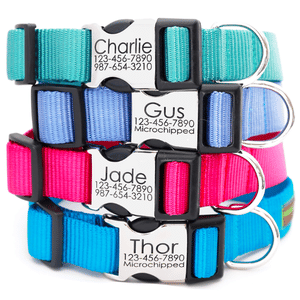
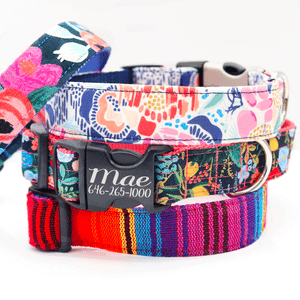
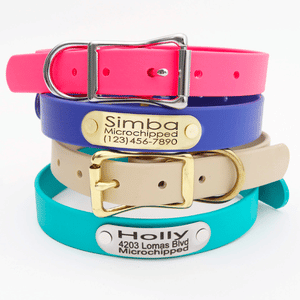
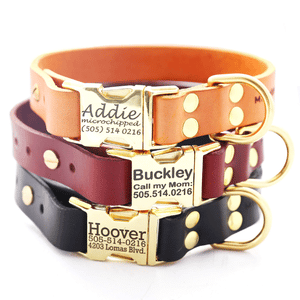
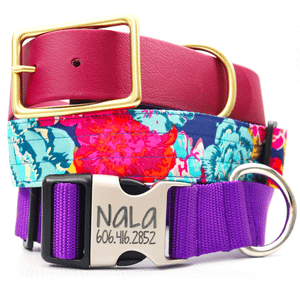
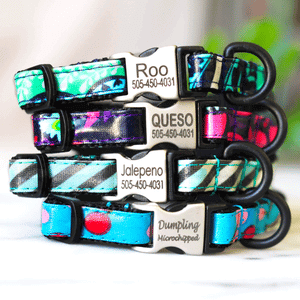
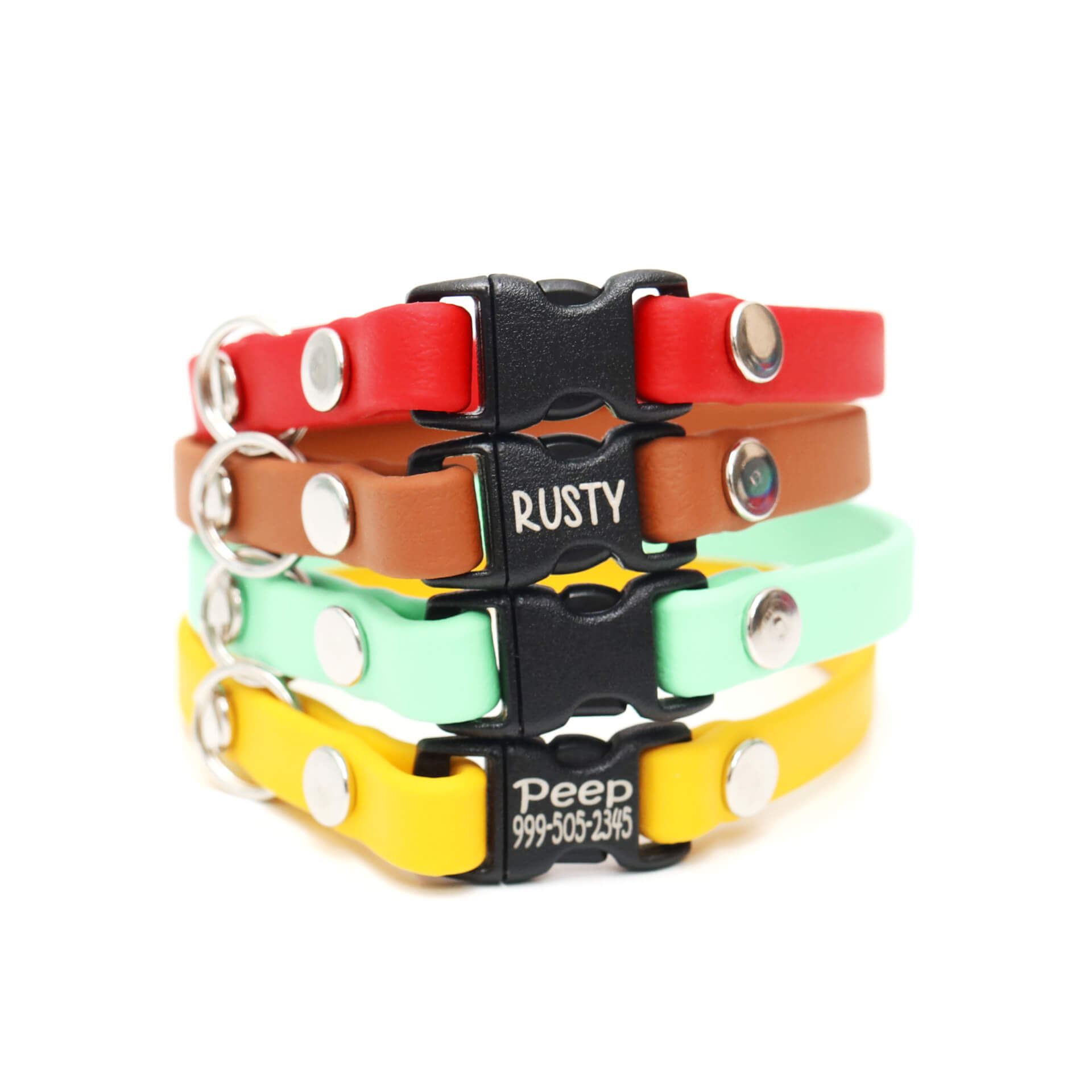
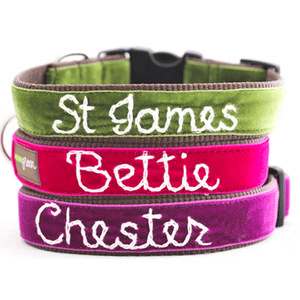
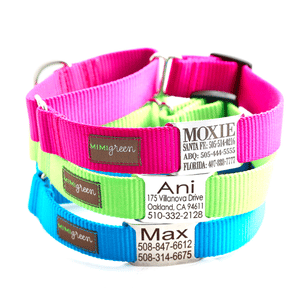
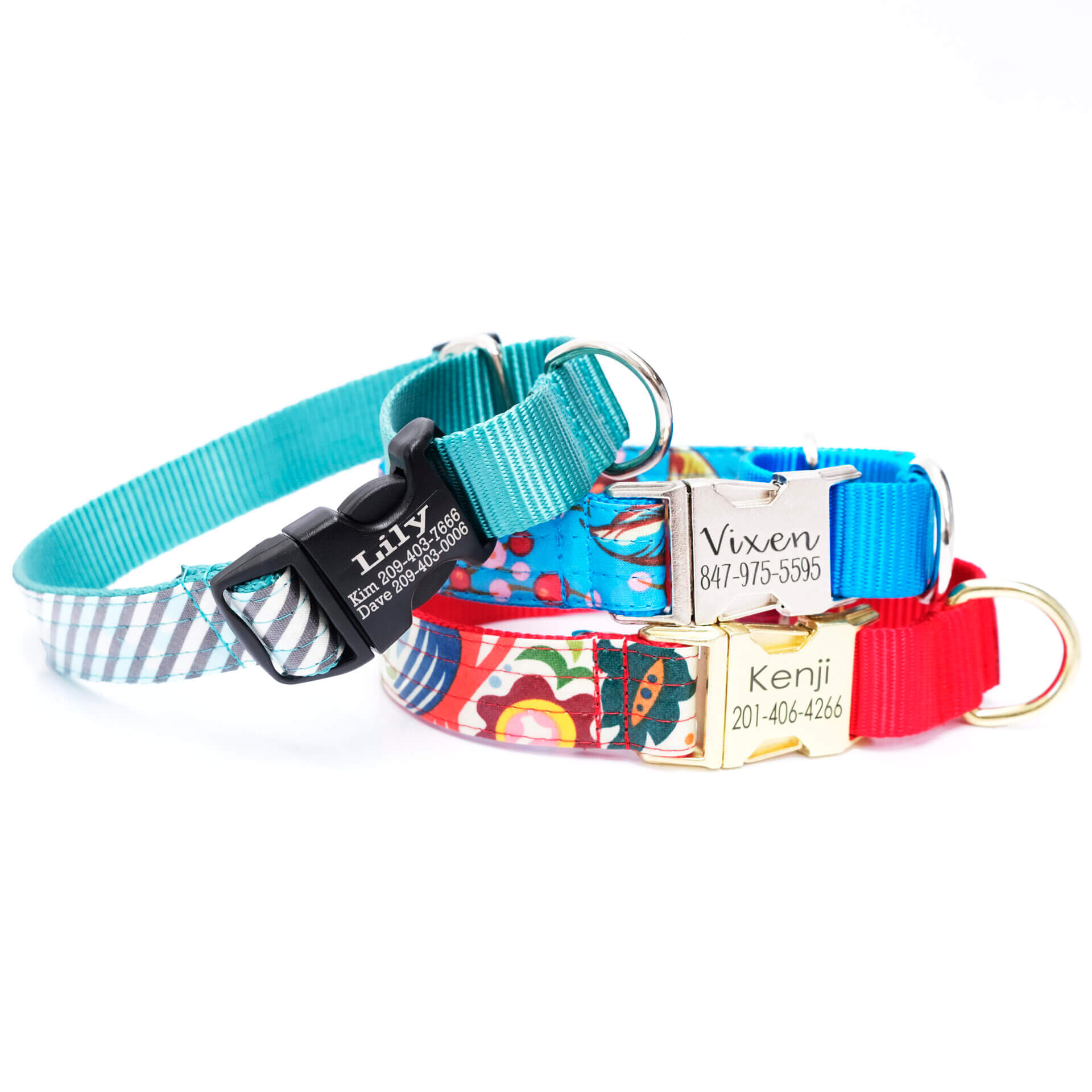
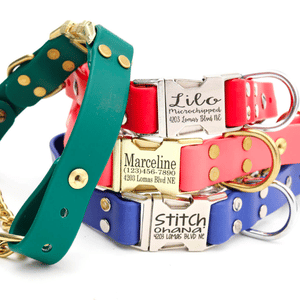
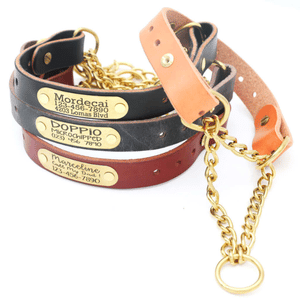
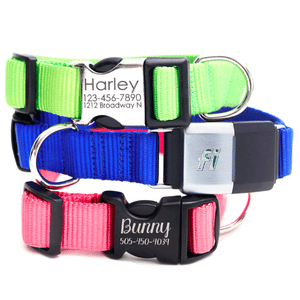
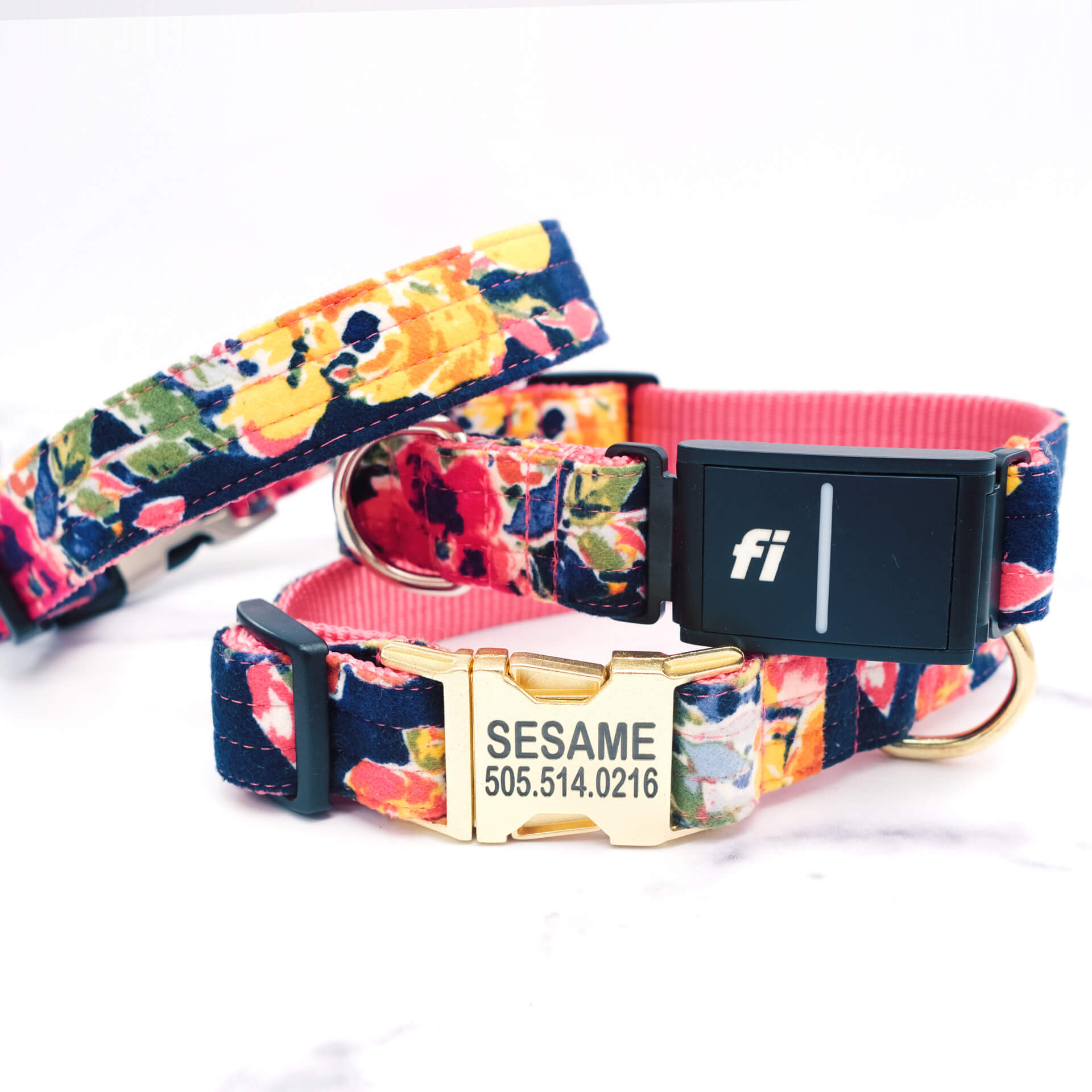
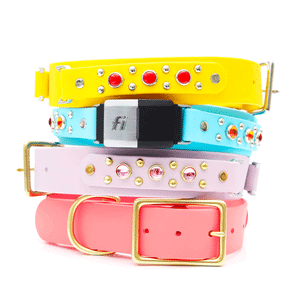
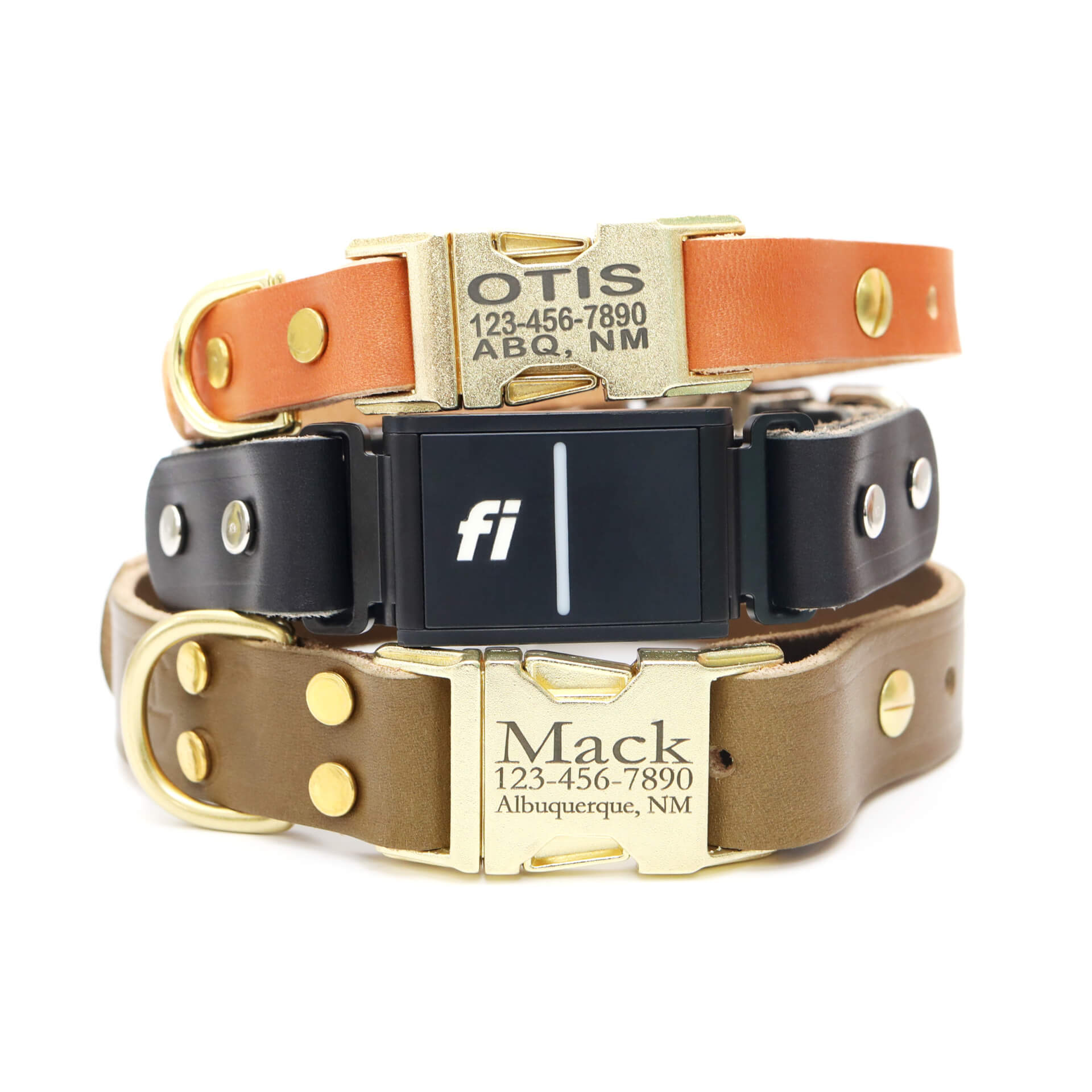
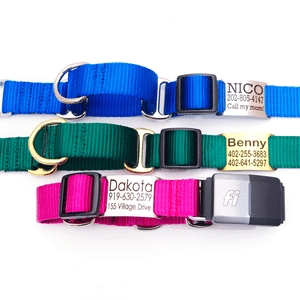

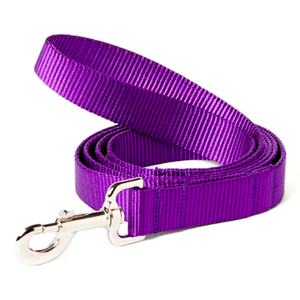
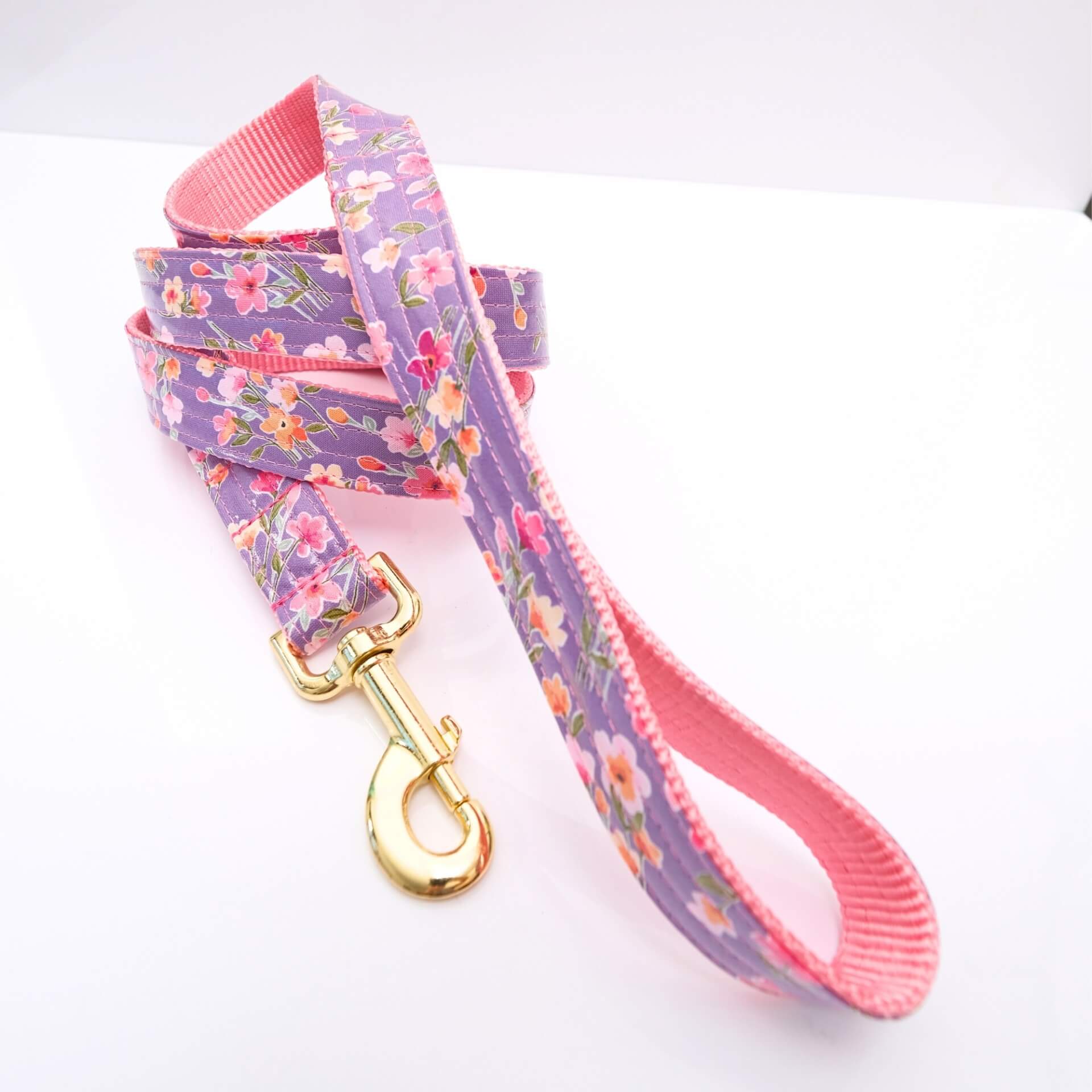
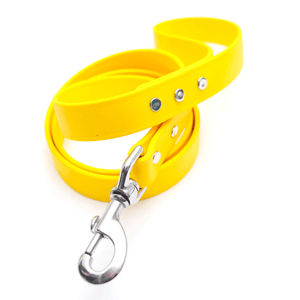
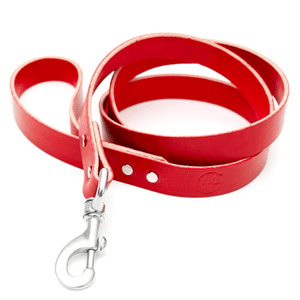
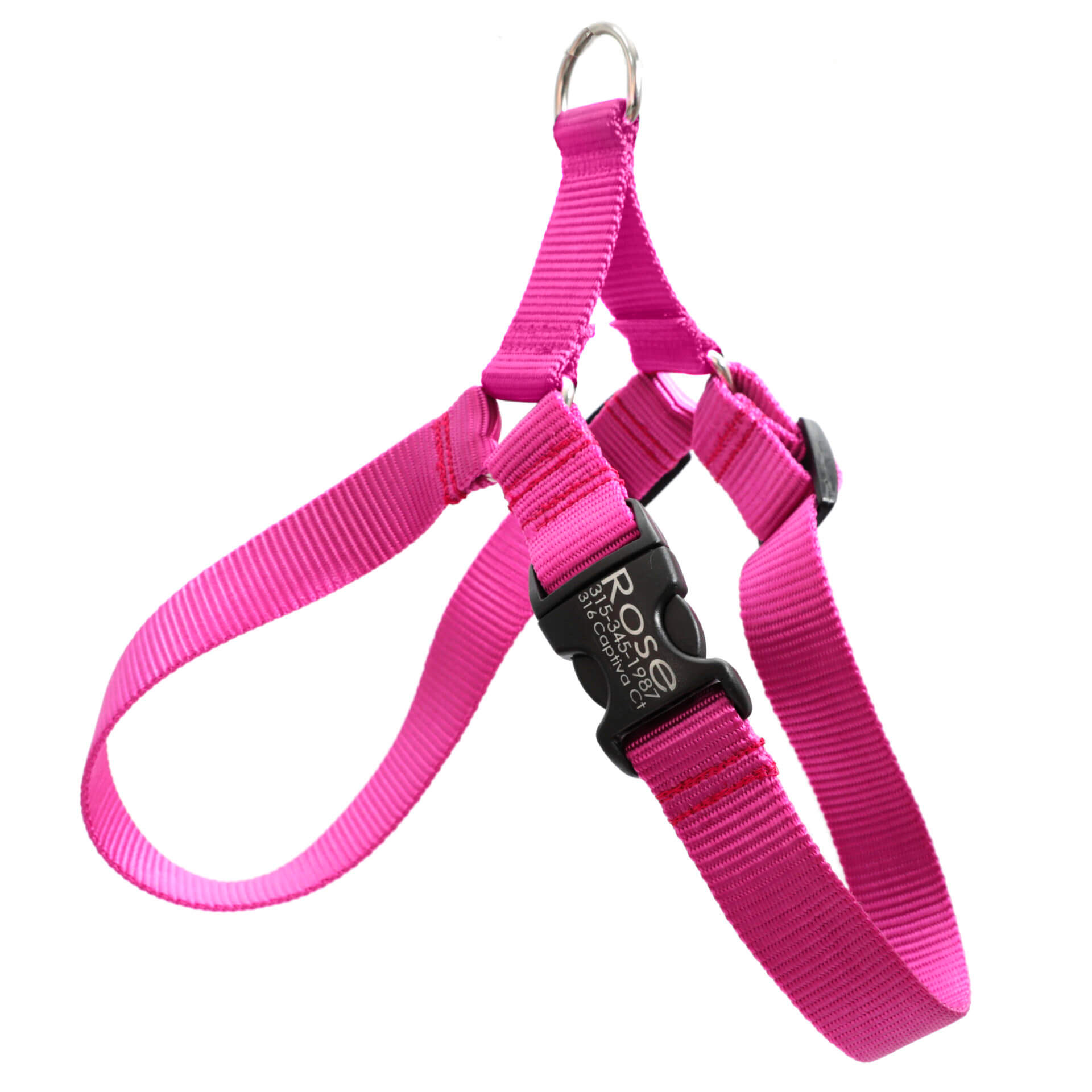
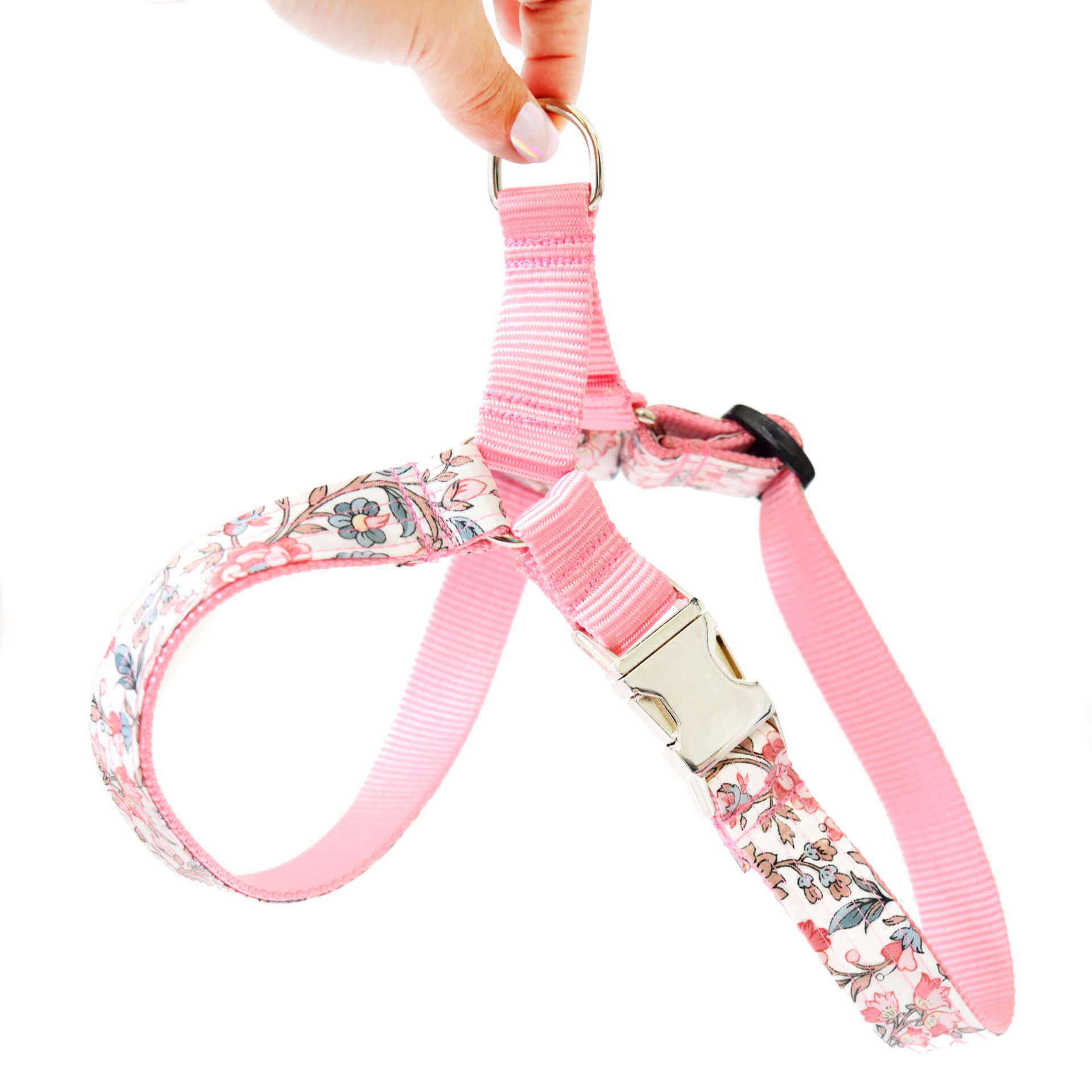
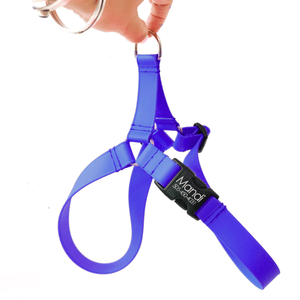
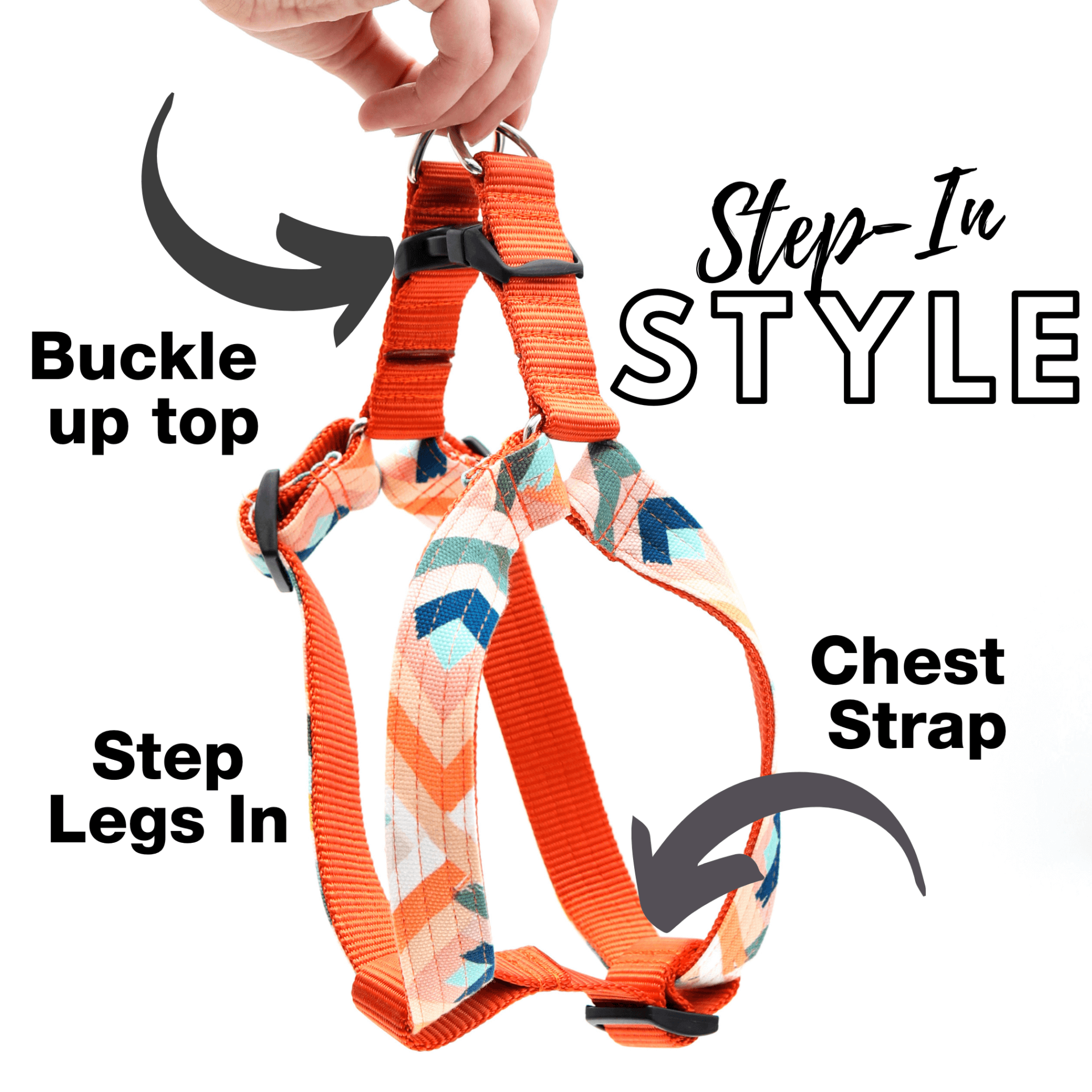
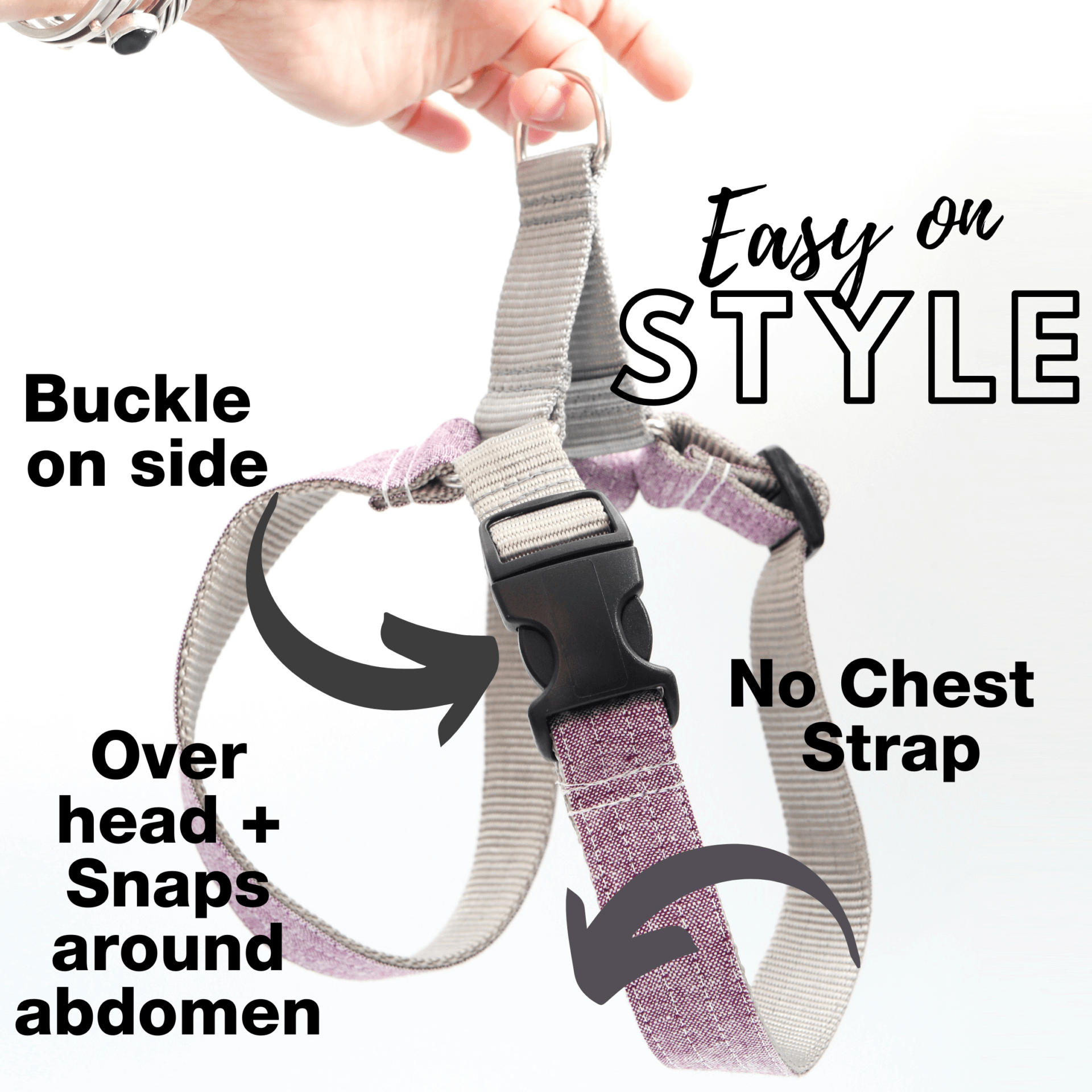

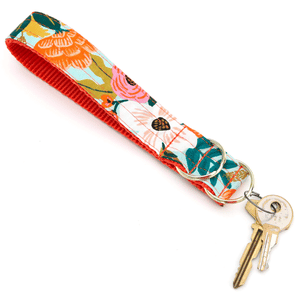
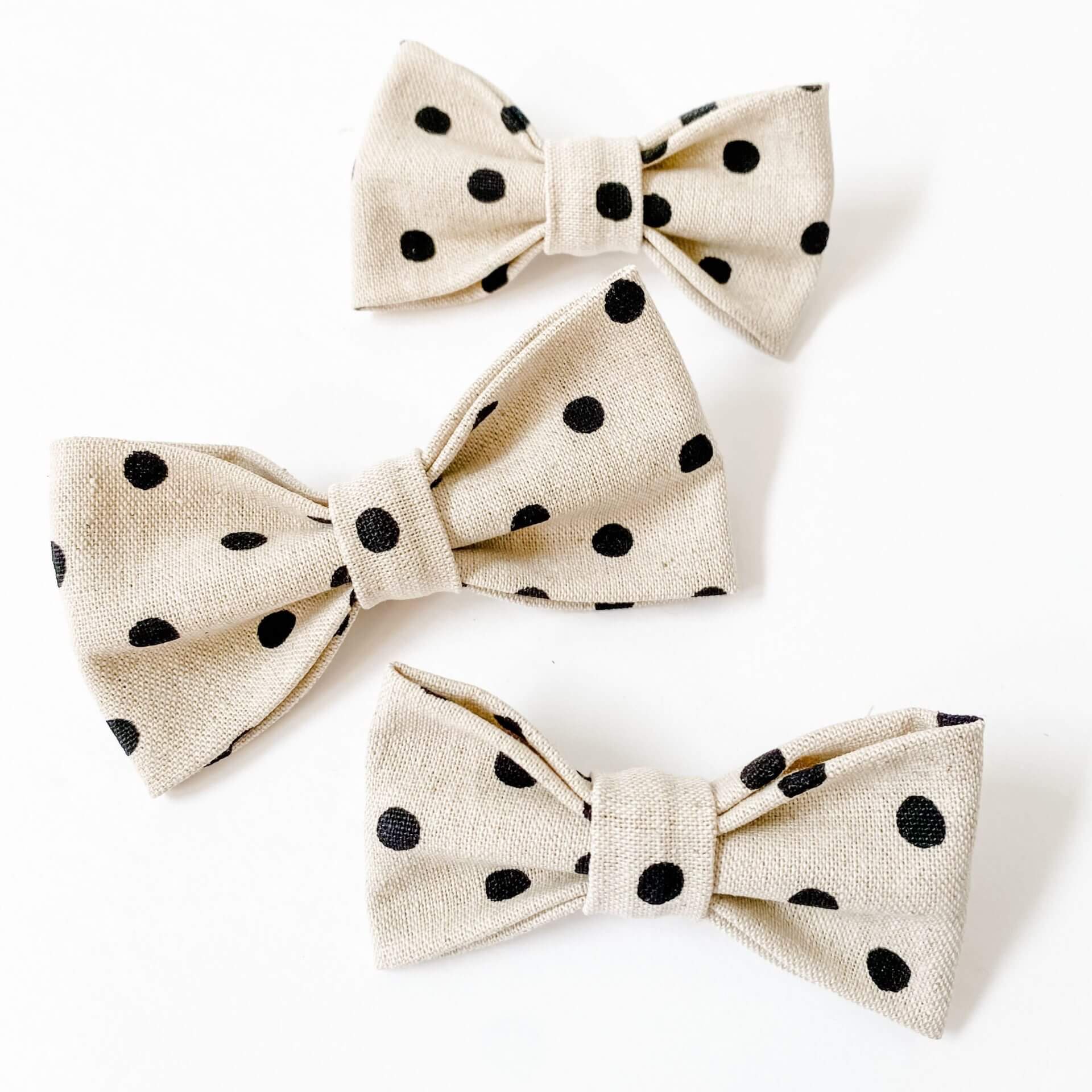
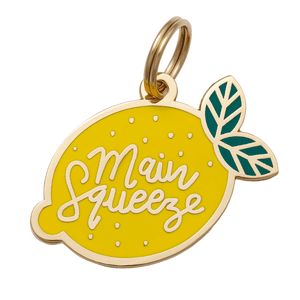
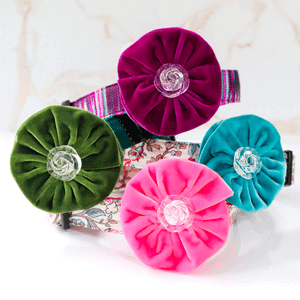
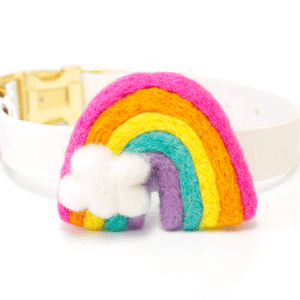
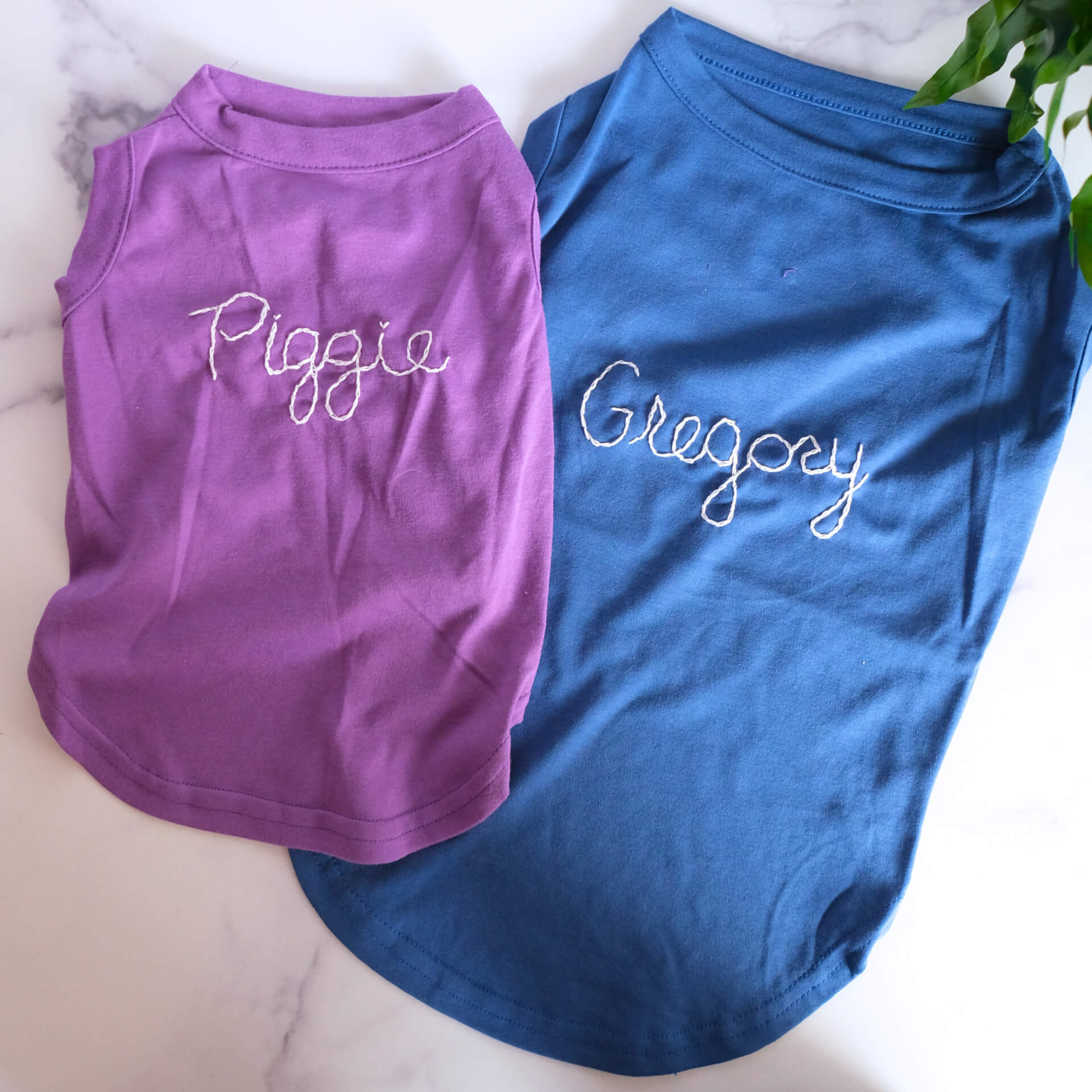
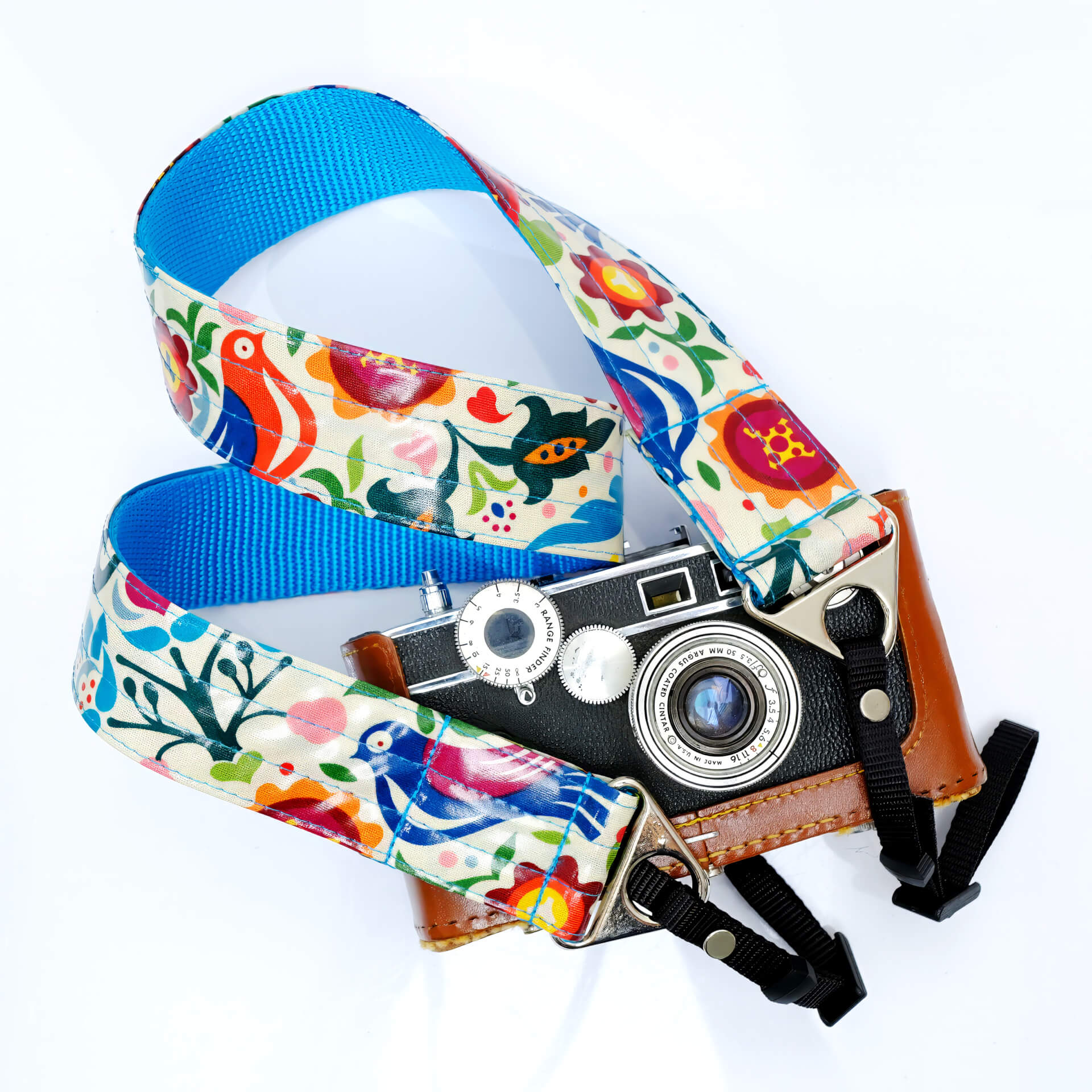
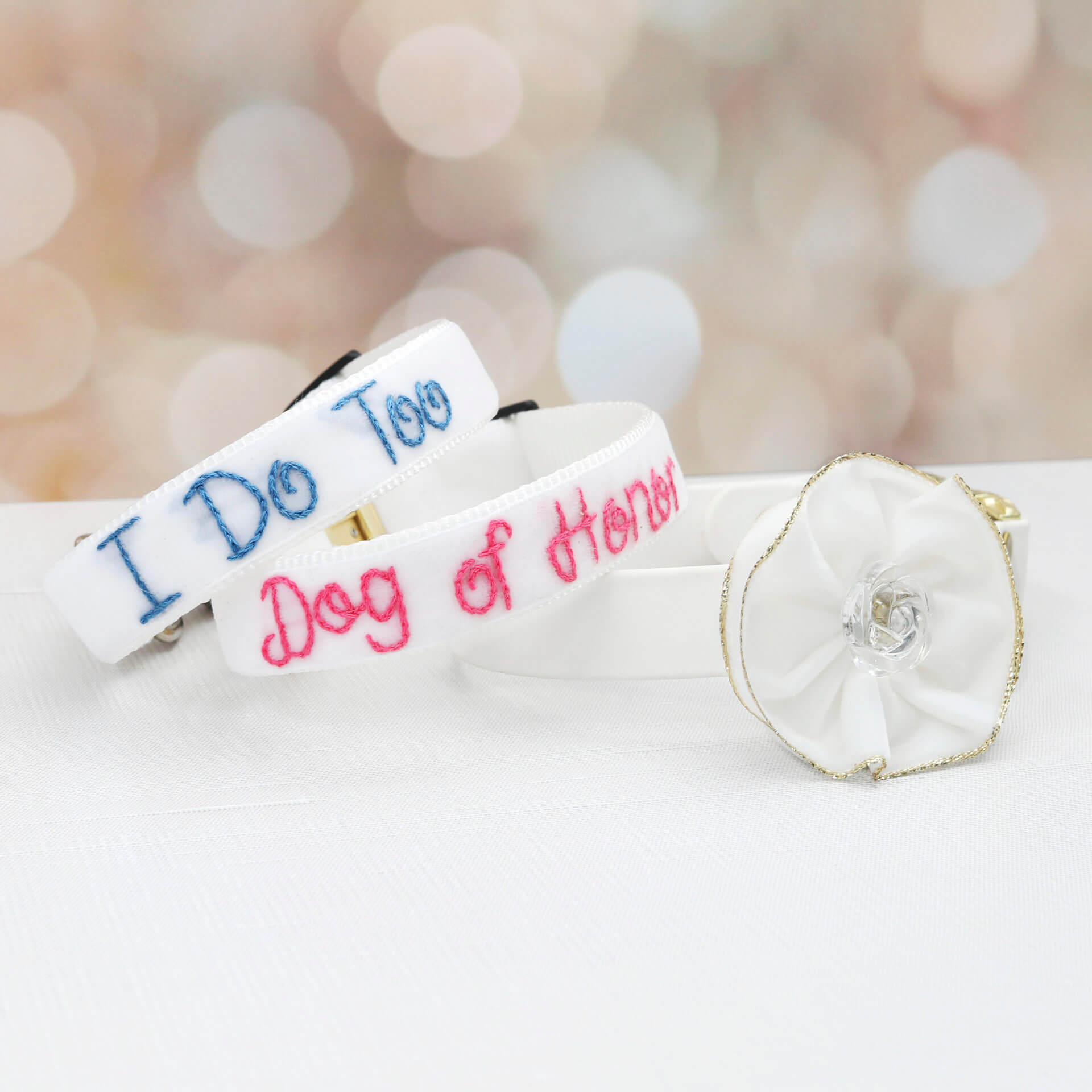

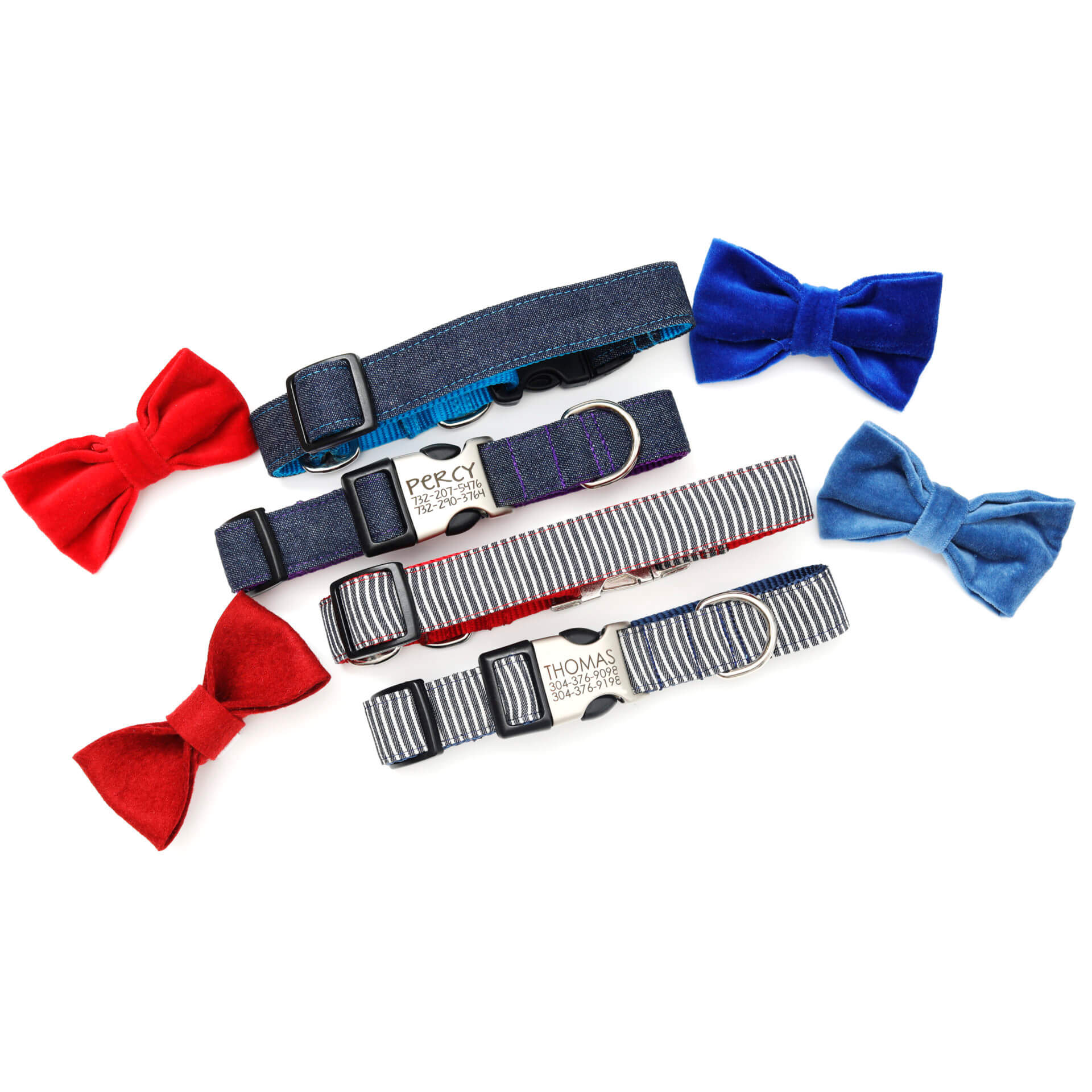

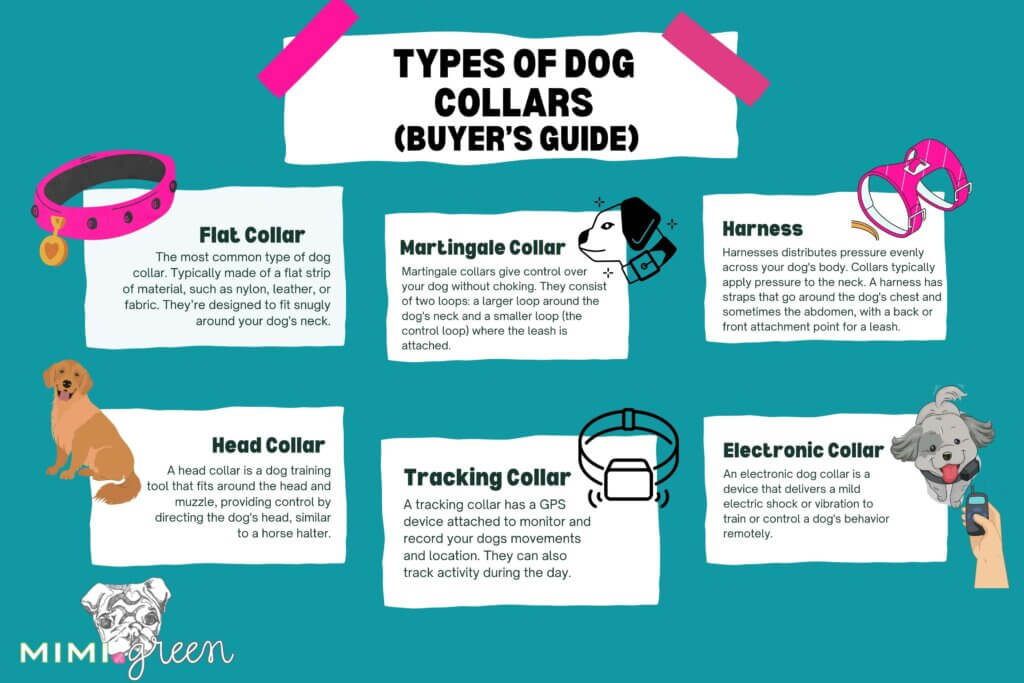
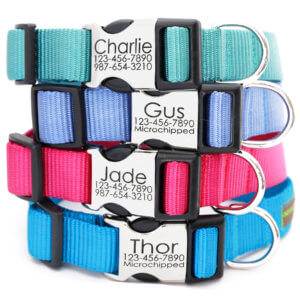
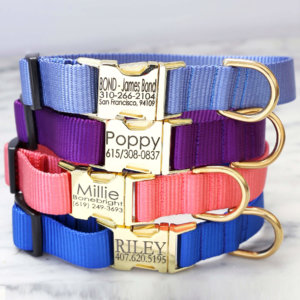
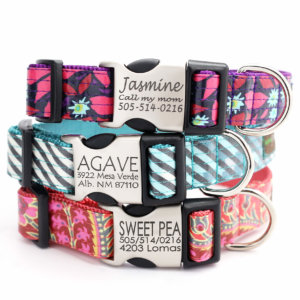
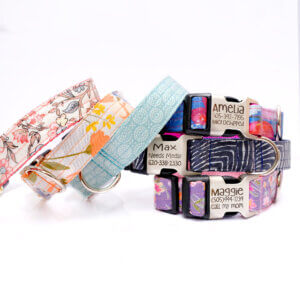
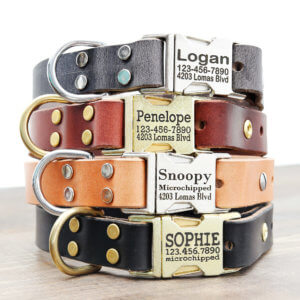
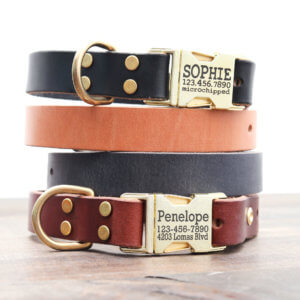
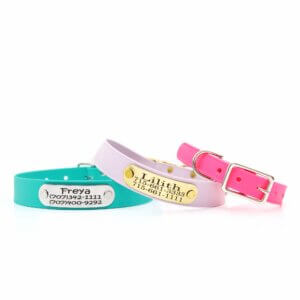
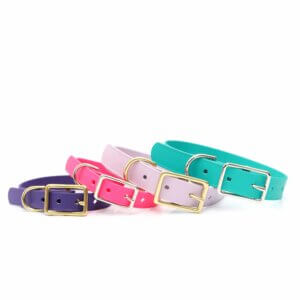
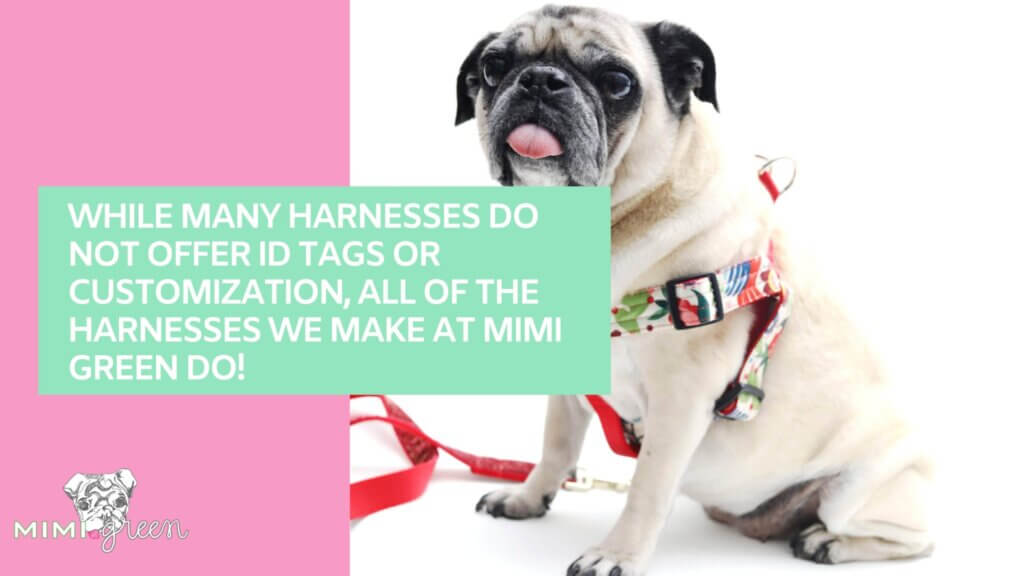
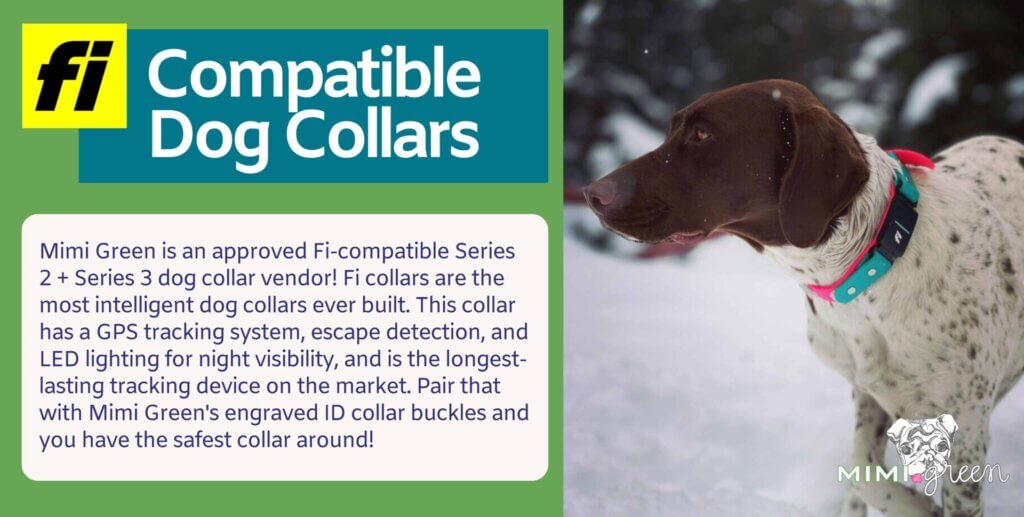
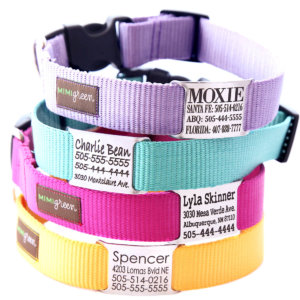
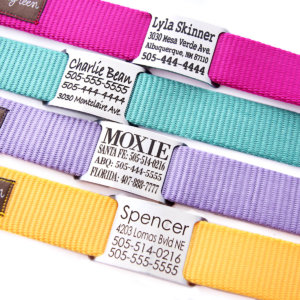
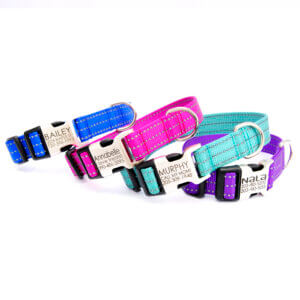

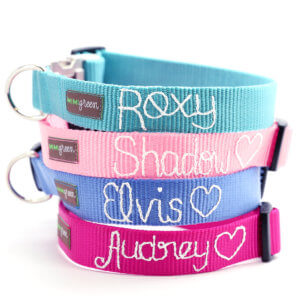
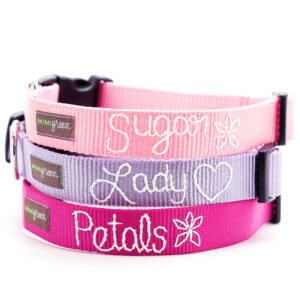
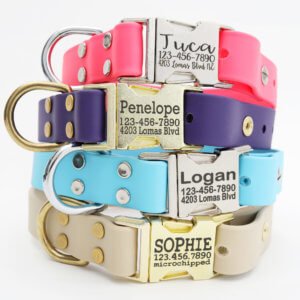
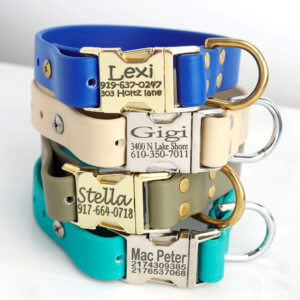
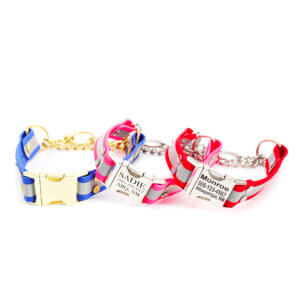
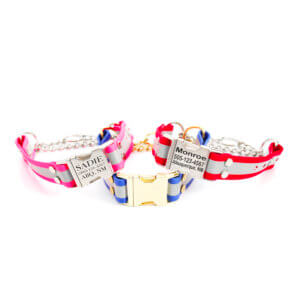
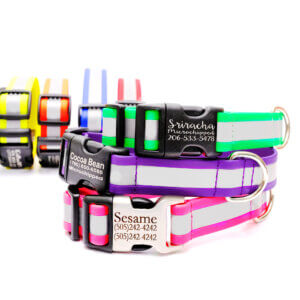
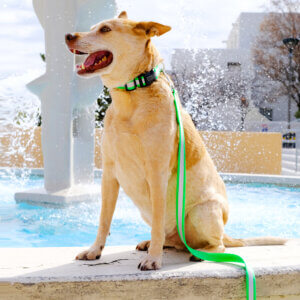
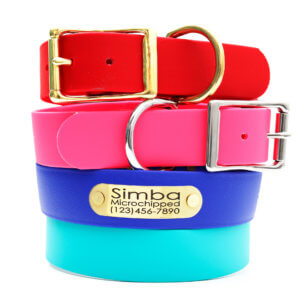
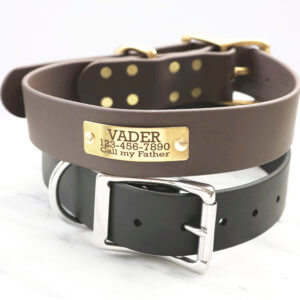
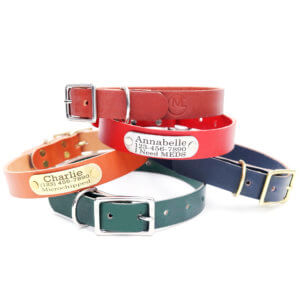
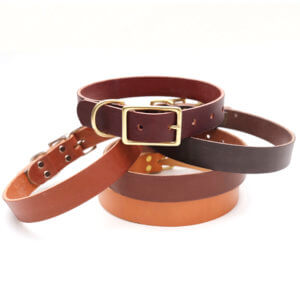
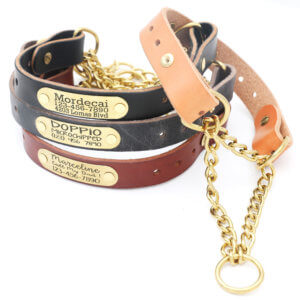
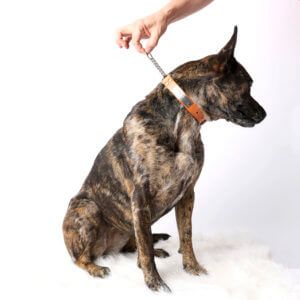
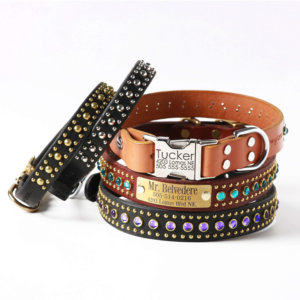
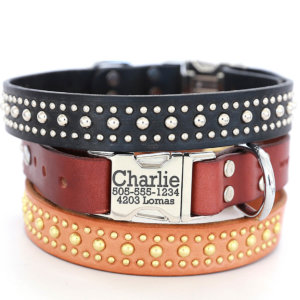

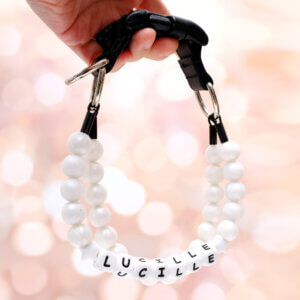
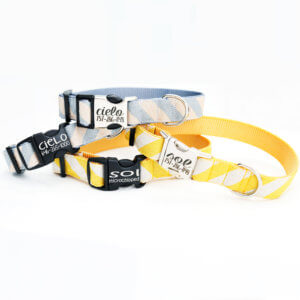

Pingback: Do Dogs Need Different Collar Sizes for Optimal Fit?
Pingback: The Perfect Fit: A Quick Guide to Choosing Pet Collars